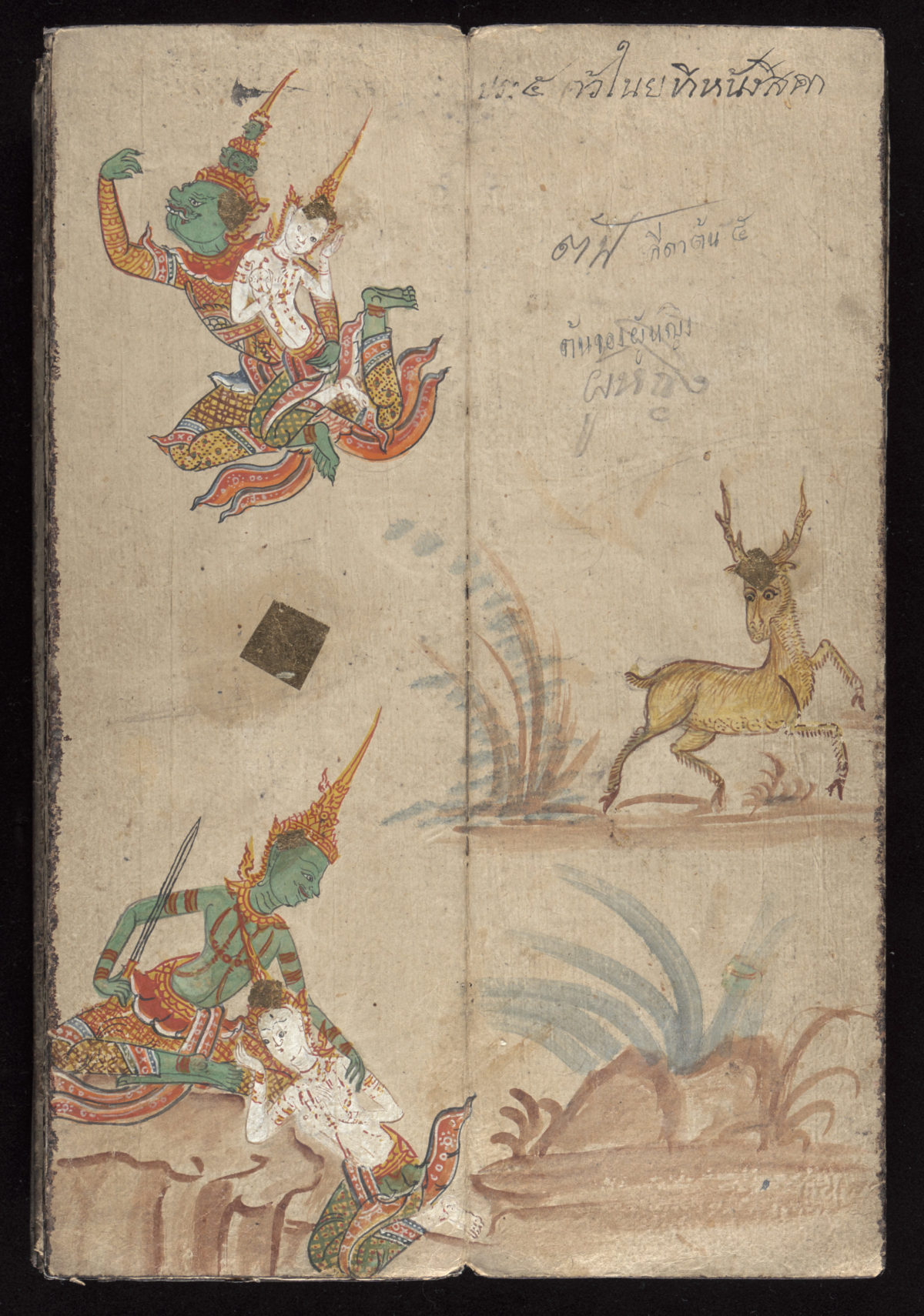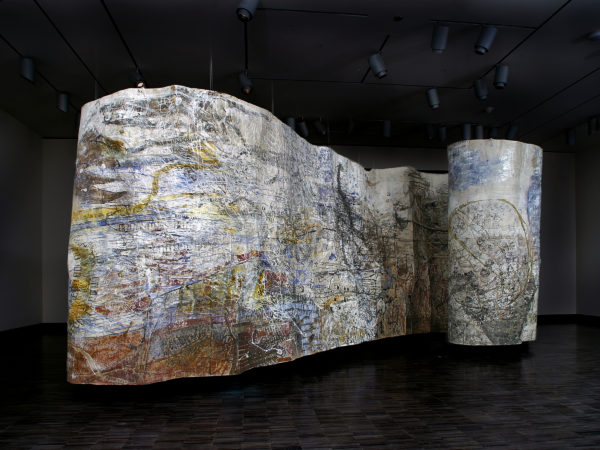Activity
The Rama Epic: Meaning and Storytelling

Manuscript with fortune-telling lore and illustrations of the stories of Rama, Sang Thong, and Manora.
WHAT THE EPIC HAS MEANT – AND MEANS TO PEOPLE TODAY
A gigantic and profound work such as the Rama epic must have had many qualities to keep people fascinated for more than two thousand years. Plot is one, of course: interesting situations are set up and we crave to find out what happens next. Then action: battles, cliffhangers, close escapes. Then romance, colorful locales, humor, magic, moral quandaries, and life lessons.
The characters, four of whom are the focus of the exhibition, face situations that parallel our own. One of the values of the epic is the opportunity it gives us to think about our own lives and our relationships with friends, enemies, lovers, spouses, neighbors, strangers, parents, children, our bosses, and the people we boss. And of course with God or however we conceive the ultimate reality.
What is our duty to these, and to ourselves? What do we do when one duty conflicts with another? Rama and Sita, and even Hanuman and occasionally Ravana face these issues. For example, Prince Rama’s royal duty requires him, for the good of the kingdom, to reject his beloved Sita. Princess Sita is offered the chance to become the chief queen of a mighty king if she will just forget her distant – and as far as she knows at the moment, defeated – husband; she never considers agreeing, but mightn’t some of us be tempted? The monkey warrior Hanuman (in some traditions) forgoes sex and earthly love and gives his heart in devotion to Rama and Sita, the embodiments of the divine. The demon Ravana, toward the end of the war, realizes that he is headed to annihilation and death. He could save himself by releasing Sita, whom he will lose at death in any case, but he chooses to fight – despairingly and defiantly – to the end.
We’ve all encountered lesser dilemmas and felt conflicted about what to do. Today people in India, Southeast Asia, and beyond continue to ponder, discuss, and debate the choices made by Rama and the other characters, and to find meanings in their own lives.
TELLINGS
Bards and other storytellers have been relating the Rama epic for countless centuries. Originating in ancient India, it spread to Indonesia, Cambodia, Thailand, and beyond, and became known in Europe as early as 350 years ago. And it was not only storytellers who narrated its gripping actions, lyrical interludes, and moral puzzles. Actors, dancers, singers, and puppeteers have performed (and continue to perform) it, and in recent decades movie and TV directors and the designers of video games have joined in.
Sculptors, painters, and other visual artists have also long engaged the epic, interpreting it in formats ranging from vast series of temple reliefs to small paintings intended for close viewing to the ornament for furniture and musical instruments. This exhibition presents important examples of their work made over a span of fifteen hundred years from Delhi to Bangkok to Paris.
The earliest version of the tale is the Ramayana said to have been composed by the poet Valmiki more than two thousand years ago. Valmiki’s telling (as it would originally have been composed and performed orally like the epics of ancient Greece) has been immensely influential as a classic of poetry in the ancient Indian language of Sanskrit and, for many, as a religious text. But a famous modern Indian scholar, studying the rich diversity of tellings known today, asks “How many Ramayanas? Three hundred? Three thousand?” Indeed, poets, performers, and artists have created Rama epics in dozens of languages and forms, and in religious and cultural contexts from the Hindu temple to the village square to the Islamic court of the Mughal emperors to the theater of Buddhist Cambodia.
These tellings, performances, and depictions may vary a good deal in plot and characterization, as well as in interpretation. Sometimes, for example, it is not Princess Sita who undergoes kidnap, captivity, and trial by fire, but only a sort of clone of her. Almost any general statement made about the epic can be countered by a contrasting example from a particular place, time, or context. Few of the world’s great stories are told and pictured in such abundant variety.





